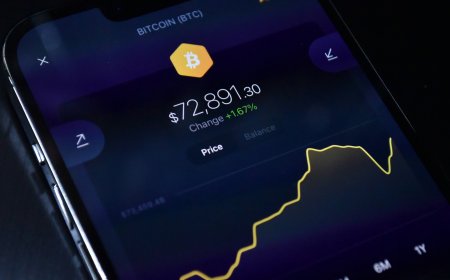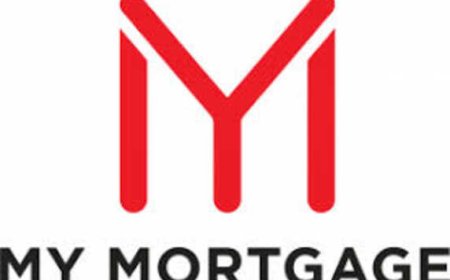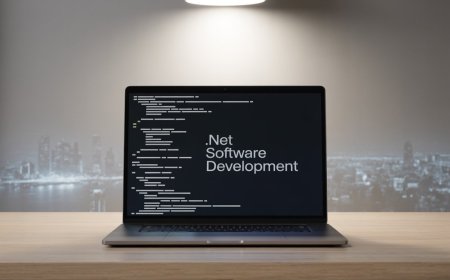Blockchain Meets IoT: Creating Smart, Secure Connected Ecosystems
At LBM Solution, a trusted Blockchain Development Company in USA, we see the intersection of blockchain and IoT as one of the most promising digital frontiers.

The Internet of Things (IoT) is already transforming our homes, cities, and industries by connecting everything from smart thermostats to industrial machines. Yet, as IoT grows, so do its challengessecurity breaches, data integrity issues, and scalability concerns. This is where blockchain steps in.
At LBM Solution, a trusted Blockchain Development Company in USA, we see the intersection of blockchain and IoT as one of the most promising digital frontiers. When these two technologies work together, they create secure, decentralized, and intelligent ecosystems that can be trusted across a wide range of use casesfrom smart cities to autonomous supply chains.
Lets explore how this synergy works and why businesses should care.
What Happens When Blockchain Meets IoT?
IoT enables devices to collect and exchange data in real-time, but it often relies on centralized systems for data storage and control. These centralized models become vulnerable to single points of failure and hacking attempts.
Blockchain, on the other hand, provides a decentralized ledger that stores data across multiple nodes, ensuring transparency, immutability, and security.
When integrated:
-
IoT devices generate data.
-
Blockchain records and secures that data in a tamper-proof way.
-
Smart contracts automate actions based on real-time input.
This combination enhances trust, automation, and efficiencycore needs of modern businesses.
Key Benefits of Blockchain-IoT Integration
1. Enhanced Security and Trust
IoT devices are notoriously vulnerable to cyberattacks. Blockchain brings in cryptographic security and eliminates the need for centralized authorities, reducing the risk of unauthorized access and manipulation.
? Real-world example: In logistics, blockchain secures data from GPS and temperature sensors in cold-chain shipping, ensuring goods like vaccines remain within safety thresholds.
2. Data Integrity and Transparency
Every interaction between IoT devices is recorded on the blockchain, creating an immutable audit trail. This is crucial for industries like pharmaceuticals, manufacturing, and food supply, where traceability and compliance are essential.
3. Automated Operations with Smart Contracts
Smart contracts enable devices to take automated actions based on predefined rules without manual intervention. For example, a smart meter could automatically initiate a payment via crypto when electricity usage reaches a certain threshold.
4. Decentralized Infrastructure
Traditional IoT networks rely on cloud-based storage and computation. Blockchain provides a peer-to-peer infrastructure that reduces latency and enhances network resilience.
Use Cases Across Industries
Smart Cities
Blockchain-powered IoT devices can automate everything from traffic lights to energy grids. Municipalities can monitor resource usage, reduce waste, and enforce transparency in public spending.
Supply Chain & Logistics
By integrating blockchain with IoT sensors, companies can track the real-time location, temperature, and condition of goods from origin to destinationpreventing fraud, loss, and inefficiency.
Healthcare
Wearable devices collect sensitive data, which must be secured and managed with strict privacy standards. Blockchain ensures this data is not only safe but also accessible to authorized professionals without compromise.
Agriculture
Farmers can use IoT sensors for soil quality, irrigation, and livestock tracking. Blockchain ensures that this data is stored securely, helping improve yield predictions and compliance with food safety regulations.
Challenges to Consider
As a Blockchain Development Company in USA, we know integration is not without its hurdles:
-
Scalability: IoT networks generate massive volumes of data. Blockchain solutions must be designed to handle this scale efficiently.
-
Energy Consumption: Traditional blockchain consensus models like Proof of Work can be resource-intensive, though newer models (e.g., Proof of Stake) are more energy-efficient.
-
Standardization: A lack of universal IoT standards can make seamless blockchain integration difficult across devices and platforms.
At LBM Solution, our approach to Blockchain Development Services in USA includes custom solutions optimized for performance, sustainability, and compliance.
Why Businesses Should Act Now
Blockchain-IoT integration is no longer a theoretical conceptits already being piloted and scaled by forward-thinking companies. Early adoption allows businesses to:
-
Increase operational transparency
-
Strengthen customer trust
-
Reduce overhead through automation
-
Improve compliance and data governance
Companies that fail to embrace this convergence risk being left behind in a hyper-connected, data-driven future.
Final Thoughts: Building the Future with Blockchain and IoT
The convergence of blockchain and IoT is one of the most significant shifts in the digital landscape. Together, they enable the creation of smart ecosystems that are connected, transparent, and secure.
At LBM Solution, we specialize in crafting scalable, real-world blockchain applications tailored to industry-specific needs. As a go-to Blockchain Development Company in USA, we help enterprises harness this powerful fusion to drive innovation and efficiency.
Interested in transforming your connected systems?
Explore our Blockchain Development Services in USA and get a personalized consultation today.
? Contact LBM Solution
Lets build smart, secure ecosystemstogether.












































